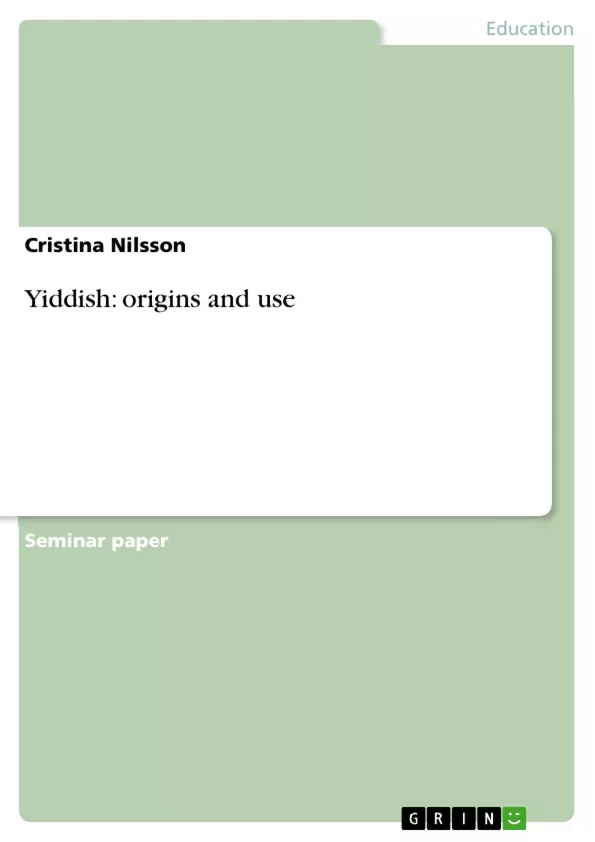Origins:
Yiddish is the historic language of Asheknazic (Central and East European) Jews, and is the third principal literary language in Jewish history, after classical Hebrew and (Jewish) Aramaic. The language is characterized by a synthesis of Germanic (the major component, derived from medieval German city dialects, themselves recombined) with Hebrew and Aramaic. Scholars tend to locate the origins of Yiddish in the Rhineland, where a handwritten prayer book from 1272 was found in the city of Worms containing the earliest known written Yiddish sentence. 2 Yiddish has a particular tradition: it took root and flowered in the ghettos (from Venetian gheto, a foundry on a small island where in XVI Jews were confined3), starting in walled juderías in Spain in the thirteenth century (according to the Lateran Councils of 1179 and 1215 it was forbidden to Jews to live close to Christians and in 1555 Paul IV ordered segregated quarters for Jews in the Papal States).
Table of Contents
- Origins
- Linguistic aspects
- Yiddish and English
Objectives and Key Themes
This text aims to provide an overview of the origins, linguistic aspects, and cultural significance of Yiddish, the historic language of Ashkenazi Jews. It explores the language's development, its connection to Hebrew and Aramaic, and its unique characteristics. The text also discusses the impact of Yiddish on modern American English.
- The origins of Yiddish and its relationship to Germanic, Hebrew, and Aramaic languages.
- The linguistic features of Yiddish, including its alphabet, pronunciation, and grammatical structure.
- The cultural context of Yiddish and its role in Jewish life and identity.
- The influence of Yiddish on American English and the emergence of "Anglish" or Anglicized Yiddish.
- The decline of Yiddish in the 20th century and its enduring legacy.
Chapter Summaries
- Origins: This chapter traces the origins of Yiddish, highlighting its roots in medieval German city dialects and its synthesis with Hebrew and Aramaic. It discusses the language's early development and its association with Jewish communities in the Rhineland and Eastern Europe.
- Linguistic aspects: This chapter delves into the linguistic features of Yiddish, including its alphabet, pronunciation, and grammatical structure. It examines the use of the Hebrew alphabet for Yiddish and the unique adaptations made to represent vowel sounds.
Keywords
Yiddish, Ashkenazi Jews, Hebrew, Aramaic, Germanic languages, alphabet, pronunciation, grammar, culture, identity, American English, Anglish, Anglicized Yiddish, decline, legacy.
- Quote paper
- Cristina Nilsson (Author), 2006, Yiddish: origins and use , Munich, GRIN Verlag, https://www.grin.com/document/76878



